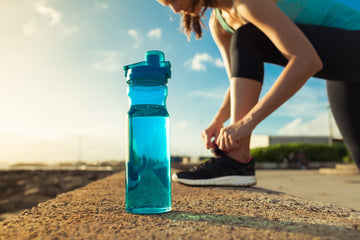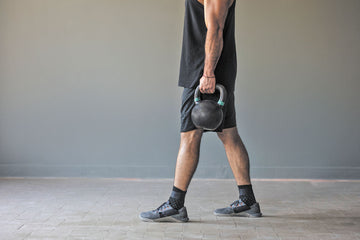Water is often called the elixir of life, and when it comes to fitness, this couldn’t be truer. Whether you’re crushing a cardio session, lifting heavy weights, or unwinding with yoga, proper hydration is your secret weapon. It fuels your muscles, regulates body temperature, and keeps you energized.
But hydration isn’t as simple as just drinking when you’re thirsty. How much water should you drink? When should you hydrate? And what about electrolytes? Don’t worry — we’ve got you covered. In this guide, we’ll dive into hydration tips to keep your body performing at its best.
The Role of Hydration in Exercise Performance
Water makes up around 60% of your body, meaning nearly every bodily function depends on it. During exercise, your body loses fluids through sweat to cool itself down. Without replacing that lost fluid, you risk dehydration — a fast track to fatigue, dizziness, and muscle cramps.
Here’s how proper hydration enhances your performance:
Boosts Energy Levels: Dehydration can lead to low energy, making even simple workouts feel exhausting.
Supports Muscle Function: Muscles need water to contract and perform. Without enough fluids, you might experience cramping or reduced strength.
Improves Endurance: Staying hydrated can help delay fatigue, allowing you to exercise longer and harder.
Enhances Recovery: Water aids nutrient absorption and waste removal, speeding up post-workout recovery.

How Much Water Do You Really Need?
The standard rule is to aim for 8 glasses of water a day — but when you exercise, your needs increase. A more tailored approach is to drink:
17 to 20 ounces of water two hours before exercise.
8 ounces of water 20 to 30 minutes before your workout.
7 to 10 ounces every 10 to 20 minutes during exercise.
16 to 24 ounces for every pound of body weight lost after exercise.
Keep in mind that these numbers vary based on factors like body size, exercise intensity, and even the weather. Listen to your body and adjust your intake accordingly.
Hydration Timing: Pre, During, and Post-Workout Tips
🌿 Before Your Workout:
Start early: Hydrate consistently throughout the day, not just right before your workout.
Electrolytes help: If you plan on a long or intense session, consider adding electrolytes to your water to ensure proper sodium, potassium, and magnesium levels.
Avoid overloading: Drinking too much water too quickly can lead to bloating and discomfort. Sip gradually.
💦 During Your Workout:
Keep water within reach: A reusable water bottle can help you sip as needed.
Sweat check: If you’re sweating heavily, replenish electrolytes to maintain muscle function.
Listen to thirst cues: While staying proactive is key, avoid overhydrating. Drinking too much can lead to a rare but serious condition called hyponatremia.
🌱 After Your Workout:
Rehydrate and recover: Drinking water within 30 minutes post-exercise helps replenish lost fluids and kickstarts recovery.
Track your progress: Weigh yourself before and after your workout. For every pound lost, drink about 16-24 ounces of water.
Incorporate water-rich foods: Foods like watermelon, cucumber, and oranges are excellent for hydration.
Electrolytes and Hydration: Are They Necessary?
Electrolytes are minerals that regulate fluid balance, nerve function, and muscle contractions. During prolonged or intense workouts, your body loses electrolytes through sweat, leading to fatigue and cramps.
Consider electrolyte-enhanced drinks if:
You’re exercising for over an hour.
You’re sweating excessively.
You’re working out in hot, humid conditions.
You experience muscle cramps or dizziness.
However, for shorter workouts or low-intensity activities, plain water is usually sufficient.
Signs of Dehydration to Watch For
Even slight dehydration can affect performance. Here are some common warning signs:
Fatigue and weakness
Dizziness or lightheadedness
Muscle cramps
Dark yellow urine
Headache
Rapid heart rate
If you experience any of these symptoms, pause your workout, hydrate, and rest.
Making Hydration a Habit
To stay consistently hydrated, try these simple tips:
Carry a water bottle: Keep one with you throughout the day as a reminder to sip regularly.
Flavor it up: Add lemon, cucumber, or mint for a refreshing twist.
Set reminders: Use your phone or a hydration-tracking app to stay on schedule.
Choose the right gear: Products like an Insulated Fitness Yoga Mat can be useful to keep your workout space comfortable and sweat-free.
Hydration for Different Types of Workouts
Strength Training: Water supports muscle contraction and endurance. Sip before and during sets.
Cardio Workouts: Long runs or cycling sessions require steady hydration and occasional electrolyte replenishment.
Yoga and Pilates: Even though these workouts may not make you sweat excessively, stay hydrated to prevent fatigue and improve flexibility.
If you're using tools like an Automatic Rebound Ab Roller or a Digital Abdominal Wheel, hydration will help you power through core workouts without cramping or losing energy.
Fuel Your Body with Every Sip
Hydration isn’t just about quenching your thirst — it’s about optimizing your performance, energy, and recovery. Every sip counts toward a stronger, more resilient body.
So, as you lace up your shoes and get ready to move, remember to grab your water bottle, listen to your body, and stay ahead of dehydration. Your workouts will thank you for it.
Stay hydrated, stay strong, and keep moving forward.







